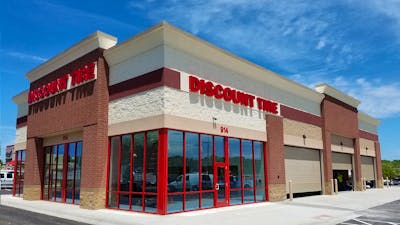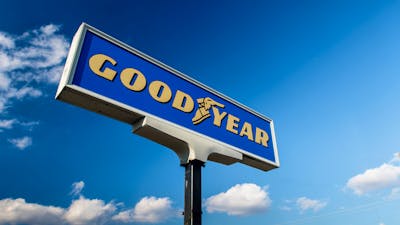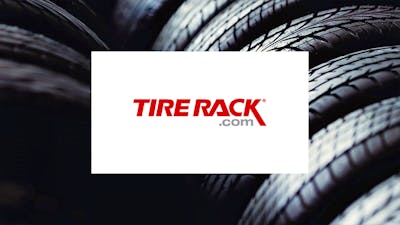Best Tires for the Ford Ranger
The best tires for your Ford Ranger will depend on your driving style and who you ask. Like all manufacturers, Ford balanced price with durability and other factors when it decided to use or pass on certain OEM tires. The company’s priorities might not be the same as yours when it comes time to replace tires. The good news is the Ford Ranger is offered with four different tire sizes on three different wheel sizes, so there’s plenty of choices out there to match the unique needs of the driver.
Get the Best Deals on Tires
Best Tires for the Ford Ranger with 16-inch wheels
- Kumho Crugen HT51 - Best budget tire
- Goodyear Wrangler Workhorse AT - Best mid-priced tire
- Falken Wildpeak A/T 3W - Best superior tire
Best Tires for the Ford Ranger With 17-inch wheels
- Kumho Crugen HT51 - Best budget tire
- Firestone Destination A/T2 - Best mid-priced tire
- Falken Wildpeak A/T 3W - Best superior tire
Best Tires for the Ford Ranger With Upgraded 17-inch Wheels
- Kumho Crugen HT51 - Best budget tire
- Falken Wildpeak A/T 3W - Best mid-priced tire
- BFGoodrich All-Terrain T/A K02 - Best superior tire
Best Tires for the Ford Ranger With 18-inch Wheels
- Kumho Crugen HT51 - Best budget tire
- Falken Wildpeak A/T 3W - Best mid-priced tire
- BFGoodrich All-Terrain T/A K02 - Best superior tire
Shop Tires Online and Save
Online tire prices are usually less than in store

Original Equipment Ranger Tires
What tires are on my Ford Ranger? The current generation Ranger is sold in multiple trims with several tire sizes:
- The standard tire size is P255/70R16, and the OE tire for this size can be either the Hankook Dynapro HT RH12 or the Bridgestone Dueler H/T 685.
- The Ranger is available with 17-inch wheels that wear tires size 255/65/R17. The OE tire for this wheel size is either the Bridgestone Dueler A/T RH-S or the Bridgestone Dueler H/T 685.
- An upgraded 17-inch wheel size is available that uses tires size P265/65R17. The OE tire for this wheel size is the Hankook Dynapro AT-M.
- The Ranger with 18-inch wheels uses tires size 265/60R18. The original tire for these models is either the Hankook Dynapro AT-M or the Bridgestone Dueler H/T 685.
Top Replacement Tire Brands for Ford Ranger
We’ve recommended three replacement tires in 16-, 17-, and 18-inch sizes, in budget, moderately priced and cost-no-object varieties. Whether your pockets are deeper than the Mariana trench or Ebenezer Scrooge considers you a role model, don’t worry; we’ve got you covered. All of these tires have ratings of four-stars or higher based on consumer surveys:
16-inch Tires for Ford Ranger
- Budget: Kumho Crugen HT51 - If you haven’t noticed already, this is shaping up to be the Kumho show. The company makes one of the best budget tires around, and at just $122 for the 16-inch size there’s nothing else that tops it.
- Moderately Priced:Goodyear Wrangler Workhorse AT - A good all-around tire at a mid-range price point. This tire is also rated for severe snow. Available with raised white letters if that’s how you roll.
- Cost-No-Object: Falken Wildpeak A/T 3W - The choice for many top-trim OEM truck and SUV vehicles, the Falken Wildpeak series is now becoming a popular upgrade for those looking for an all-terrain tire that is also pretty good for all-around use. Rated for snow use.
17-inch Tires for Ford Ranger
- Budget: Kumho Crugen HT51 - The Crugen HT51 is one of the highest rated tires of any type or price, and offers a long life and tread rating.
- Moderately Priced: Firestone Destination A/T2 - Want a do-it-all tire that won’t completely break the bank? Firestone’s got you covered. With great consumer reviews and a long treadlife rating, the Destination A/T2 will keep your Ranger on the road and off the road for a long time.
- Cost-No-Object: Falken Wildpeak A/T 3W - The choice for many top-trim OEM truck and SUV vehicles, the Falken Wildpeak series is now becoming a popular upgrade for those looking for an all-terrain tire that is also pretty good for all-around use. Rated for snow use.
18-inch Tires for Ford Ranger
- Budget: Kumho Crugen HT51 - Once again, it’s Kumho with the best budget tires. Great customer ratings, long treadlife ratings, and solid all-season traction make the HT51s a good pick for budget tires.
- Moderately Priced: Falken Wildpeak A/T 3W - The choice for many top-trim OEM truck and SUV vehicles, the Falken Wildpeak series is now becoming a popular upgrade for those looking for an all-terrain tire that is also pretty good for all-around use. Rated for snow use.
- Cost-No-Object: BFGoodrich All-Terrain T/A KO2 - It’s a toss-up between the Falken WildPeak and BFG KO2s in this segment. The BFGs have the added white lettering if you want it. Rated for snow duty.
When Should You Replace Tires?
You’re going to hit one of two milestones that will require a tire replacement: Mileage or time.
Most drivers cover between 12,000 and 15,000 miles per year, and the vast majority of Ranger owners are going to be past the mileage that their original equipment tires were intended to cover before they’ll go past the tire’s usable age.
The life of your tire can be somewhat predicted by its UTQG (Uniform Tire Quality Grade) rating. Tire manufacturers apply their own grades to tires for treadwear, traction and temperature. When you’re researching tires online, a UTQG will come up next to the tire name in three digits and a number (ex. 500 A A).
You can glean a bit of info from the tires by reading this rating:
- 500 - The durability rating of a tire, compared to a control tire with a treadlife of 100. To obtain a grade, tires run on a 640 kilometer course for 11,520 km. Every 1,280 km, the tread depth is measured, to provide a projected tread life. The higher the number, the longer the predicted treadlife.
- A - This is the Traction rating of a tire, which indicates how well a tire stops in wet conditions. The highest letter grade is AA, followed by A, B and C.
- A - The second letter in the UTQG is the Temperature rating, which indicates how well a tire holds up to extreme heat. A is the highest, followed by B and C.
Original equipment 18-inch Michelin LTX M/S2 tires on the Ranger earn a solid 720 AA UTGQ rating. Unless they are damaged, these tires could last as long as 72,000 miles before you need to replace them.
All of that said, this is only a guideline. Those Ranger tires are equipped with wear bars that run perpendicular to the tire’s tread. If the tread wears to the point where it’s flush with the wear bar, it’s time to replace that tire, no matter how many miles its traveled.
The other consideration is time. Each tire has a raised date code on the sidewall. The number begins with the letters “DOT” followed by 12 digits in three four-digit groups. The date code is the third group of four digits. To decipher the date of your tires, the first two digits represent the WEEK the tire was produced, and the second two digits represent the YEAR.
For example, if your tire’s date code is 3217, that indicates the tire was manufactured in the 37th week of 2017, or some time between September 11 and 17th that year.
Once tires go beyond five years old, it’s time to consider replacing them. Tires are made up not just of rubber and steel or kevlar belts, but chemicals that help the tires resist UV rays, temperature changes and a lot of other environmental hazards. Those chemicals start to break down after five years or so, and the tires aren’t doing the job that they need to do.
Now here’s an assignment: You know the formula for a date code. Take a look around in the parking lot the next time you’re out there and see how ancient some of the tires are on vehicles that people purchased ostensibly for their safety rating.
Why Not Replace with Original Equipment Tires?
There’s no harm in replacing your tires with the shoes it came with from the factory. However, depending on what kind of driver you are, there are significant reasons to purchase something different.
You only need to purchase ONE set of tires for your car every four years or so, depending on how much you drive. When an auto manufacturer purchases tires, they buy them by the hundreds of thousands. For the manufacturer, the decision to choose a supplier one brand or another comes down to a price point.
For you, your consideration may be completely different. If you could get a tire that stopped 20 feet shorter for an additional $10 per tire over the original equipment, you’d probably do it. Similarly, if there was a tire that made less road noise for a minimal investment over stock, you’d probably decide on the slightly more expensive tire (that is, unless you’re trying to drown out the conversation of your back-seat-driving spouse.)
Changing Ford Ranger Tire Sizes
Depending on the year and model, you may be shopping tires to fit anything between 15-inch for older models to 18-inch wheels with various widths and sidewall sizes along the way. It is possible to change the wheel and tire sizes, but a general rule of thumb is to keep the total diameter of wheel and tire the same. So, that means that downsizing an 18-inch wheel to a 17-inch wheel would include a proportionate upsizing of the tire sidewall to compensate.
Downsizing wheels has its advantages. Benefits include:
- Better ride quality – More rubber means more cushion for poor road conditions.
- Cost reduction – Big tires are expensive, so moving to a smaller wheel size will mean less costly tire purchases.
- Seasonal changes – Winter and snow tires are available for a larger selection of smaller wheel sizes and the narrower footprint will provide better traction.
- Off-road – Many people choose to downsize wheels for off-road use to increase the vehicle’s shock absorption capabilities and bump traction on loose surfaces.
On the other side of the coin, going up in wheel size has its benefits:
- Better handling – Slimmer profile tires makes for less rubber to move around.
- Better looks – This one’s subjective, but many people feel that larger wheels look better than smaller wheels with more rubber.
- Better braking – Larger, wider wheels provide a bigger patch of rubber on the ground to slow the vehicle, reducing braking distance.
How to Read Tire Sizes
When reading tire sizes, it’s important to understand what the numbers mean. The Ford Ranger’s 18-inch wheels come with P265/60R18 109H all-season tires:
- 265 - indicates the width of the tire from one sidewall to the other in millimeters. This tire is 265 millimeters wide.
- 60 - indicates the aspect ratio, or sidewall height, as a percentage of the tire’s width. In this case, it’s 60 percent or of the tire’s width.
- R - means radial tires. Radials are the most common type of automotive tire and have fabric woven in at various angles with tread that is strengthened with additional layers of rubber.
- 18 - indicates the wheel diameter.
- 109 - is the tire’s load rating.
- H - is the tire’s speed rating. H-rated tires have a maximum top speed of 130 mph.
You may have noticed that the Ford Ranger’s four tire sizes have different diameters and also different aspect ratios. Generally, automakers choose tires that have the same outer diameter. This allows them to have only one speedometer setting.
Now that you know what comes on a new Ranger and how to read the size numbers, let’s look at the different types of tires available to you. Depending on the type of driving you’re doing, where you live, and the weather, you have a variety of choices for tire types:
- Touring and All-season tires - provide a smooth ride, good wet and dry traction, decent winter traction, and longer tread life. These tires are acceptable for winter use but can’t be expected to provide the traction and stopping power that a dedicated winter tire can.
- Performance tires - are focused on providing confident handling, better wet and dry traction, and a sporty feel. Their higher grip and speed ratings come with a tradeoff of shortened tread life and reduced ride quality.
- All-terrain tires - are built to maximize off-road traction and provide good durability overall. Their construction means more noise and less comfort on the road, but winter traction and tread wear is acceptable.
- Winter and snow tires - are made with special rubber compounds that maintain grip and pliability when temperatures drop. They are also built with special tread patterns to maximize the vehicle’s ability to start and stop on very slippery roads.
Tires Sizes By Year
| Year | Trim | Size |
|---|
Shop Tires Online and Save
Online tire prices are usually less than in store

Ford Ranger Tire FAQ
- What are the best tires for a Ford Ranger?
We’ve got a bunch of recommendations in this article, but in general, the Kumho Crugen and the Goodyear Wrangler are decent rubber for the money.
- What size tires fit on the Ford Ranger?
That depends on what trim you’re driving. The question most people ask is “What’s the largest tire I can put on a Ford Ranger with a stock wheel and no suspension lift?” If you’re running the 17-inch wheels, you can generally fit a 265/70R17 tire on that wheel with no rubbing of the inner fenders or suspension components.
- What is the best Ford Ranger tire pressure?
Check inside your driver’s side door for a white and yellow label that will tell you the exact tire pressure recommendations for your Ranger model. That tire pressure can also change depending on the load of passengers you’re carrying, as well as the cargo load. Note that the pressure on the tire itself is never the correct setting, but rather a maximum.
- How often should I rotate my Ranger’s tires?
Rotating tires is more about the tire than it is about the car. A typical rotation interval is somewhere between 5,000 and 7,000 miles, though specific cars and tires may change those numbers a bit. The Ranger is either a rear-wheel or four-wheel drive-based car, so the rear tires will be worn more quickly than the rears. Do not blow off this service.
- What is the best Ranger tire change kit?
Your Ford Ranger should have come equipped with a compact spare tire and changing tools in the trunk. In this case, you already have everything you need to physically change the tire, but you may want to carry an extra roadside emergency kit with an upgraded lug wrench, jumper cables, and emergency markers just in case.













